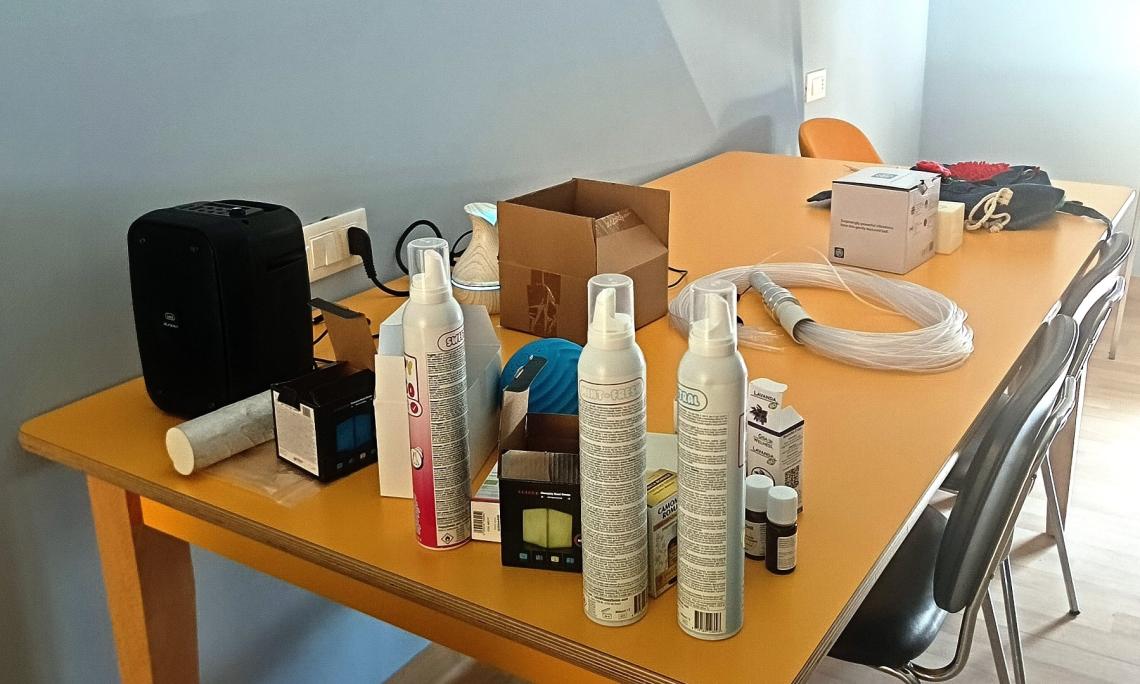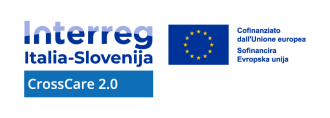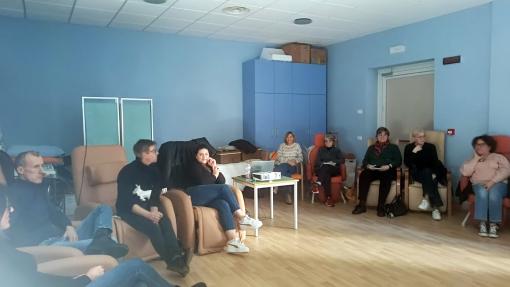Successful conclusion in Aviano and Sacile of courses to raise awareness among operators, families and elderly people with cognitive fragility
AVIANO – SACILE. An awareness-raising pathway aimed at families, operators and citizens to offer new skills and care tools to improve the psychophysical wellbeing of people with cognitive impairment, dementia or Alzheimer's disease. The day after the signing of the Community Pact, signed within the European Interreg Italy-Slovenia project ‘CrossCare 2.0’ by twenty or so bodies and organisations in the Sacile area, a new phase of the project got underway, which aims to reach out more and more to the citizens of the Ambito Livenza Cansiglio Cavallo area with a series of awareness-raising meetings dedicated to the Snoezelen Method.
The Cooperativa sociale Itaca, which is also the lead partner of CrossCare 2.0, held a meeting last February 15th at the Aviano Day Care Centre dedicated to the operators of the day care centres of the Ambito, while in Sacile a series of meetings were organised with the elderly involved in the experimentation of the CrossCare 2.0 Model, which started at the end of December 2024 and ended at the end of February 2025.
Thanks to the ever-participating reflection with the Servizio Sociale dei Comuni Livenza Cansiglio Cavallo, Crosscare 2.0 is promoting a series of awareness-raising meetings for caregivers, families, operators in the sector and, more in general, citizenship on the use of the Snoezelen Method.
Snoezelen, through a series of multi-sensory stimulations, aims to generate reactions from those who are in a condition of cognitive fragility within a protected and structured space, accessible to all, aimed at developing in the person the ability to relate to and get to know the outside world through sensory channels, in a context set on playful and soothing dynamics.
THE SNOEZELEN METHOD
Born in Holland at the end of the 1970s, the Snoezelen Method envisages the implementation of relaxing activities through visual, auditory, olfactory and tactile sensory stimulation, facilitated by the functional role of the staff conducting the activity. Snoezelen techniques are employed in specially equipped environments, where the nature, quantity, arrangement and intensity of stimulation are controlled by the operator. The multi-sensory trolley offers bubble tubes, image projectors, fibre optics, surfaces and tactile materials, which allow visual, sound, vibration and movement effects to be produced.
The operator who leads the session is asked to be closely involved and to become a facilitator of the forms of interaction between the person and the environment, but also an enabler, a true guide towards the pursuit of pre-established well-being goals. The person with cognitive fragility is thus placed at the centre of the experience, while the environmental stimuli and the operator are in the context to promote and enrich the related effects of relief and enjoyment.
As supported by the relevant literature, this is to all intents and purposes a non-pharmacological therapeutic intervention with targeted objectives: increased attention spans, reduced irritability and/or oppositionality, decreased aggressive behaviour, increased states of psycho-physical wellbeing, increased communicative intentionality, and knowledge of one's own body and how it is placed in space. Furthermore, the atmosphere of safety and security guaranteed in a Snoezelen environment helps the person to derive maximum well-being from the activity, sharing a positive relational experience with the caregiver.


